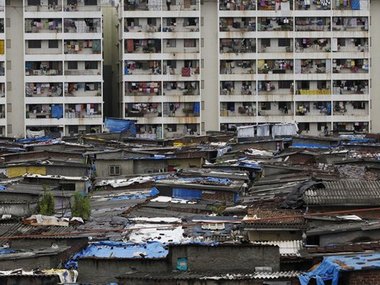By Rajesh Pandathil and Sunainaa Chadha
With the latest directive to banks on home loans, the Reserve Bank of India has in effect made up for the absence of a real estate regulator in the country.
In its latest missive, the central bank has asked banks to be cautious about the 80:20 schemes floated by builders, which entail a tripartite pact among the builder, customer and the financier. As per the agreement, the bank disburses the entire loan to the builder but in the name of the customer who is in deal with the builder to buy an under construction flat.
As per real estate research firm Liasas Foras’ data the in the June quarter alone as many as 100 projects were launched under the scheme in Mumbai. Buyers got attracted to the scheme as they were getting a no-EMI option for two years.
The RBI through its directive warned banks against these schemes saying it is risky to disburse full loan amount for an under construction flat as there is a risk of default by the builder. In such a scenario, the customer and the bank will be caught on wrong foot, it said.
[caption id=“attachment_1087447” align=“alignleft” width=“380”]  With the latest directive to banks on home loans, the Reserve Bank of India has in effect made up for the absence of a real estate regulator in the country.[/caption]
Not surprisingly, builders are crying fowl. “The scheme has been doing good for the industry and the customers. It will impact the sales in a huge way,” the Confederation of Real Estate Developers’ Associations of India said in a press release.
However, not everybody thinks so. Crisil Research said in a press release yesterday that the move is unlikely to have any major impact on developers, as very few of them are being given upfront disbursement of funds under these schemes.
It sees limited demand even for residential demand because among the top 10 cities, 20:80 and similar schemes are mainly prevalent in Mumbai and the National Capital Region (NCR).
“…Even in these cities, the proportion of projects offered under the 20:80 schemes is 15-20 percent and those which offer upfront disbursement of funds to developers is much lower. As this notification does not apply to schemes in which the disbursal is linked to the stage of construction, the overall impact on residential demand will be negligible,” it said.
The head of operations of a Bangalore-based builder also told Firstpost that the latest RBI directive will not hit the financials of all builders as such schemes are localised and mostly target first-time buyers in middle-income projects in Mumbai and the NCR.
“The 80:20 scheme has been the highest in the Rs 50 lakh to Rs 1 crore residential real estate bracket or mid-tier segment in Mumbai’s extended suburbs and NCR’s suburbs like Noida, Ghaziabad, Faridabad, Gurgaon, etc,” the official said.
Gulam Zia, national director, research and advisory services, Knight Frank, is of the opinion that if developers do not find out some other means to reward the consumer,the move may bring about a 10-15 percent price correction, not more than that.
“Stopping the scheme will impact cash flows of those developers dependent on the schemes to spur sales, those developers with deep pockets can sustain but the rest will have to either look at selling core assets to bigger developers or reduce the price expectations from home buyers,” Zia told Firstpost.
According to HDFC Securities, the RBI circular was only marginally negative for developers as of the estimated 200 such subvention schemes prevalent across India, less than 10 percent would involve disbursal of entire amount upfront to the developer.
It does not see majority of players being affected adversely but cautioned that DLF may get affected as it had sold 40 percent of its Rs 1,500 crore inventory in its Crest project in Gurgaon under the upfront 15-80-5 disbursal scheme in May 2013.
In short, as Crisil says, the intention behind the RBI notification is purely to enhance consumer awareness about 20:80 schemes and highlight all the risks and liabilities under such schemes.
And while the scheme was a definite win for builders, the biggest risk for lenders and home buyers was if the builder defaults on the loan or delays the project.
For if the builder delayed EMIs credit information bureaus would not hold the developer responsible and nor will the bank be able to chase the builder to pay up. Net-Net, the bank’s money could get locked.
The concern for the RBI, though was the banks. As a Business Standard editorial notes, such schemes encouraged speculation. They were also a major source of weakness for banks, which were overexposed to projects that might or might not be completed in an uncertain, unregulated sector.
The RBI acted in time by by indirectly intervening in the real estate sector which it is not a regulator of.And this is not the first time the RBI has done this.
Banks had last year sough the RBI’s permission to restructure real estate loans without making provisions. The central bank did not give its consent on this,The Economic Times reported in November.This too amounted to an indirect intervention in the real estate market by the RBI.
Until the time the Real Estate Bill is passed, every step the RBI takes on banks’ real estate exposure will effectively be a regulation of the sector. And for every such move, home buyers will say “Thank God, RBI exists”.


)
)
)
)
)
)
)
)
)



